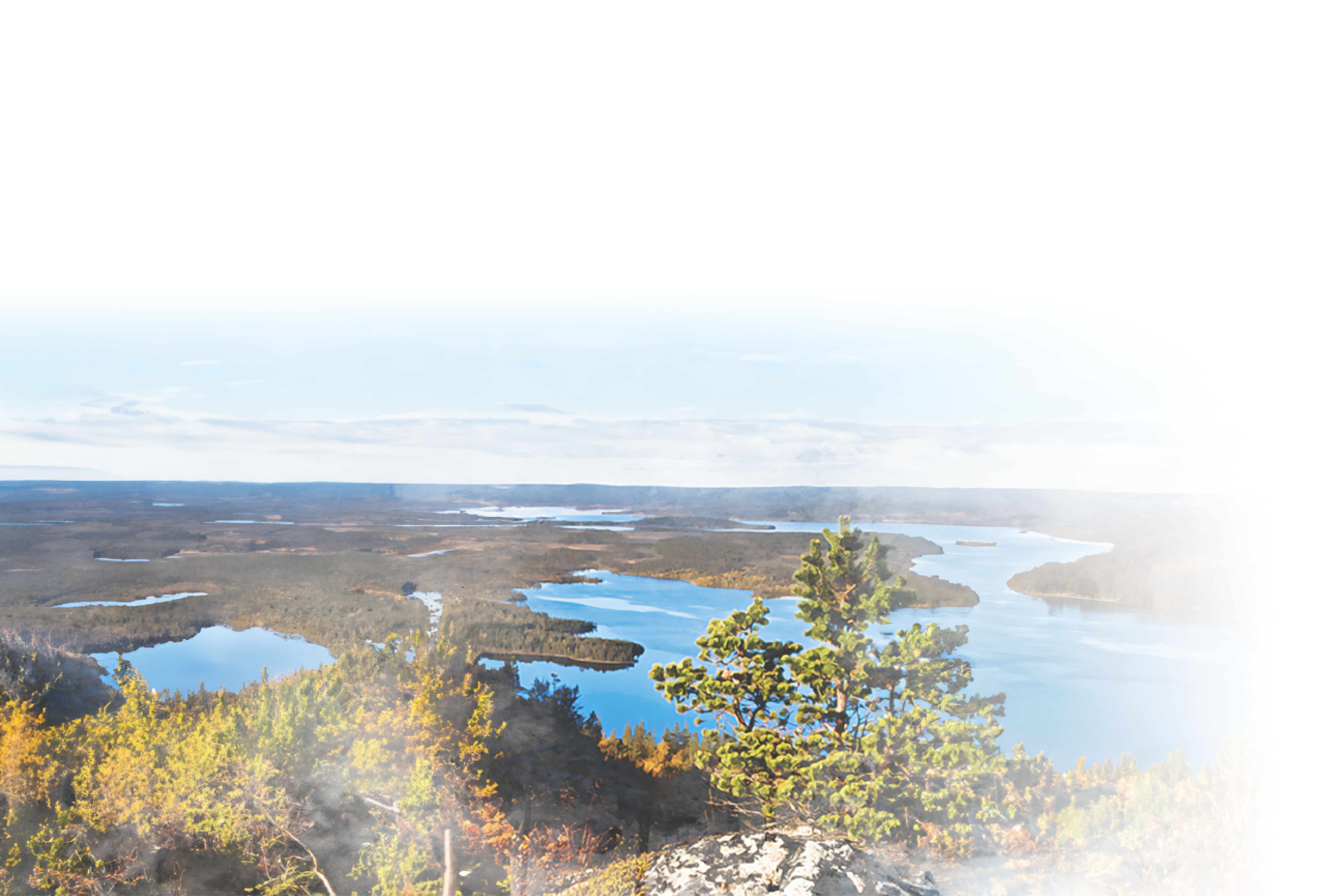Approaches to climate change management
Climate change management
GRI 2‑9, 2‑12, 2‑13Responsibilities
The Board of Directors reviews and approves our Environmental and Climate Change Strategy, relevant Policy and any subsequent amendments thereto, as well as risk appetite, and supervises the risk management framework for climate change.
The Company has the Sustainable Development and Climate Change Committee established under its Board of Directors. In 2023, the Committee reviewed the medium‑term emission reduction goals until 2031 and resolved to continue the technological study and consideration of options for the development of in‑house power generation facilities for the period until 2050 using technologies with minimised carbon footprint. The Committee also reviewed the Environmental and Climate Change Strategy and key focus areas of carbon neutrality.
The Management Board and its Risk Management Committee implement climate change risk management measures and procedures. Members of the Board agree upon parameters of the Company’s risk appetite, including those relating to climate change, and make recommendations to the Board of Directors regarding their approval. The key risks, including climate change threats, are reviewed on a quarterly basis.
The Vice President for Ecology and Industrial Safety at Nornickel is responsible for the development and implementation of the Company’s Environmental and Climate Change Strategy. The Vice President for Investor Relations and Sustainable Development is responsible for setting strategic ambition and vision for climate change and developing the relevant Policy, as well as monitoring its implementation.
The Sustainable Development Department is responsible for providing methodology support to the Company on climate change and related risks, support of risk owners, monitoring progress against the roadmap to comply with the TCFD recommendations, and reporting on climate change.
Units of the Head Office, branches and Group companies are responsible for relevant aspects of the Climate Change Policy and the Environmental and Climate Change Strategy within their scope.

Corporate documents on climate change:
The Company’s climate change vision is outlined in a number of corporate documents approved by the Board of Directors:
- Climate Change Policy;
- Environmental Policy;
- Renewable Energy Sources Policy;
- Environmental and Climate Change Strategy.
The fundamental corporate document on climate change is MMC Norilsk Nickel’s Climate Change Policy, which sets out the Company’s key commitments.
The Company’s key commitments in accordance with the Climate Change Policy
- Develop and regularly update our climate change strategy
- Organise regular audits of climate change risk management and publicly disclosed climate change indicators
- Identify and measure the contribution of the Company’s products to the low‑carbon economy in the process of life‑cycle assessment
- Implement management systems and risk management tools to respond to climate change and have them integrated into the risk management system in line with the TCFD requirements
- Attract and effectively allocate capital to implement the Company’s climate change strategy
- Adopt key performance indicators (KPIs) related to climate change goals for managers and employees of the Company
- Review commercially viable opportunities to reduce carbon footprint, including the use of assessment tools for responsible value chain management and the development of green technology partnerships to accelerate the decarbonisation of the Company’s operations
- Promote advance practices and innovations
- Apply GHG emission offsetting mechanisms, including natural climate solutions (including conservation and restoration of forests and other ecosystems that absorb carbon dioxide) where the application of such solutions appears to be the most feasible and commercially viable solution
- Expand engagement and partnership with stakeholders on climate change agenda
- Ensure transparent and regular disclosure of GHG emission targets and other relevant indicators and aspects in accordance with the Russian laws and best global standards.

Nornickel’s strategic vision on climate change
Nornickel closely monitors the aspects of intense global warming, permafrost thawing, and increasing frequency of extreme weather events. These factors may have a significant impact on the economy and well‑being of the regions where the Company operates. Nornickel is committed to building resilience to climate change risks, reducing GHG emissions, and fostering innovation.
Alongside that, the low‑carbon transition of the global economy is opening up new opportunities for Nornickel’s green metals. Decarbonisation of transport and focus on renewable and hydrogen energy will be driving demand for our products in the long run.
The Company supports the UN SDGs, in particular SDG 13 Climate Action, unconditionally shares the principles of the Paris Agreement, and supports its goal of keeping the global average temperature increase well below 2 °C and making efforts to limit the increase to 1.5 °C.
In developing strategic and operational documents and initiatives, Nornickel is guided by leading international standards that address corporate governance, climate risk management, and related disclosures.
Nornickel’s climate action targets are set out in the Environmental and Climate Change Strategy through 2031.
In 2023, the Strategy underwent an update and was divided into mandatory and voluntary parts. Targets values are to be refined in 2024–2025.
In addition, during the year we worked on developing the key focus areas of carbon neutralityApproved by the Board of Directors in 2024. The document sets out main efforts consistent with best business practices to reduce gross GHG emissions and carbon footprint of products in the short, medium, and long term. The main focus is on opportunities to develop low‑carbon energy sources, climate projects, use of energy‑efficient technologies and equipment, artificial intelligence, conversion of vehicles to alternative fuels. The Company analyses the possibility of implementing projects on CO2 capture and storage, as well as entering into deregulated bilateral contracts for purchase and sale of electricity.
Internal carbon price
In 2023, Nornickel continued to implement the internal carbon price, a management tool to mitigate climate change risks.
The Company analysed the practices of peers in the global market and chose an approach it deemed most appropriate — shadow pricing, which involves the calculation of theoretical costs or expenses that are taken into account when making investment decisions
The purposes of shadow pricing are:
For testing, the Company uses several price ranges that vary subject to current and prospective tax liabilities, potential payments under the carbon border adjustment mechanism, and the pace of decarbonisation. For the baseline price range in 2023, the carbon price was set at USD 47 per tonne of CO2 equivalent. Nornickel intends to continue testing the methodology to determine an optimal approach to incorporating cost evaluations of GHG emissions into investment project decision‑making.
Development of employee competencies
Nornickel is consistently developing employee competencies in climate change monitoring. In 2023, we updated the professional competency model of the sustainable development vertical, with test questions developed to evaluate the knowledge of employees, including in terms of the climate agenda; we also held workshops on climate change. The Company is developing a training course on all aspects of the ESG agenda, including climate change.
Integrating climate change into the supply chain
The Company has approved MMC Norilsk Nickel’s Supplier Code of Conduct, which outlines the area of responsibility of contractors, including in terms of climate change and GHG emissions reduction:
In order to assess the impact of suppliers’ operations on climate change and to encourage decarbonisation measures, questions on GHG emissions were included in the supplier due diligence in 2023.
Nornickel’s roadmap to comply with the TCFD recommendations
In 2023, Nornickel completed the implementation of the roadmap to comply with the TCFD recommendations adopted in 2021, which included more than 50 measures aimed at improving the system for managing climate change‑related risks and opportunities. Alongside that, the Company started developing the Climate Change Action Plan through 2025 in furtherance of the TCFD roadmap it had previously completed.
We place heavy emphasis on climate risk management. Among other things, we are developing energy saving technologies and implementing a geotechnical monitoring system for permafrost soils. This helps us identify potentially hazardous defects and deviations in a timely manner, thus reducing the likelihood of accidents. In our decision‑making, we take into account the territorial singularities of the Arctic in order to adapt our operations to the specific conditions in this region.
Alexey Devochkin,
Polar Division’s Deputy Director for Industrial Ecology and Sustainable Development (length of service with the Company – 29 years)
